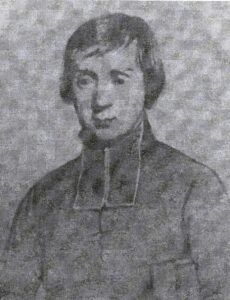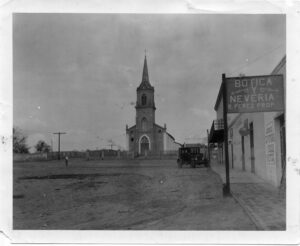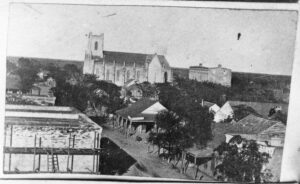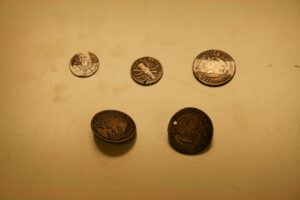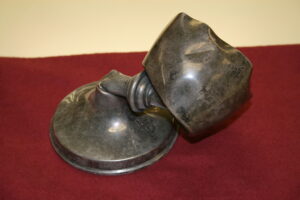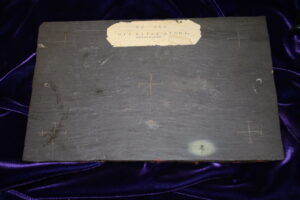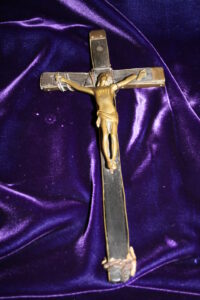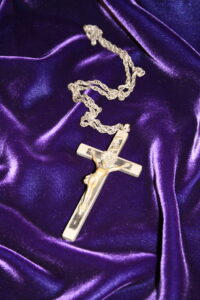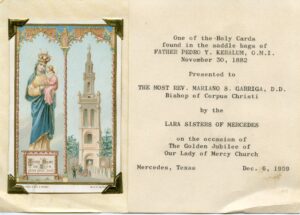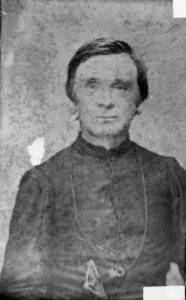“The great esteem in which Kéralum was held during his life, combined with his mysterious death and the well-publicized discovery of his body, ensured him a prominent place in the annals of the pioneers of Catholicism in Texas…”
Pierre Yves Kéralum, a pioneer Catholic missionary and church architect in the lower Rio Grande valley, was born in Quimper, Brittany, France, on March 2, 1817. After working for a while as a journeyman carpenter and architect, he felt drawn to the Catholic priesthood and entered the diocesan seminary of Quimper at the age of twenty-eight. In 1850, as a deacon, he asked to be accepted into the missionary congregation of the Oblates of Mary Immaculate and was ordained a priest by the congregation’s founder, Bishop de Mazenod, on February 15, 1852. The first Oblates had arrived in Texas in late 1849 but were all withdrawn by early 1851. The newly ordained Kéralum sailed with a group of young Oblates from France in March 1852 and arrived at Galveston on May 14 to begin work again in Texas. After helping to establish the first college-level Catholic seminary in Galveston, Kéralum was transferred to the Oblate mission center of Brownsville in March 1853. From then until his death he was a circuit rider and church architect along the lower Rio Grande.
After being assigned in mid-1854 to the recently inaugurated mission center of Roma, which covered a large territory upriver from Brownsville, Kéralum combined pastoral work with the task of designing and building the parish church, for which the cornerstone was laid in September 1854. When the Oblates turned the Roma parish over to a diocesan priest in June 1856, the church was still unfinished.
The Oblate superior, who had been supervising the building of a much more imposing church in Brownsville, drowned at sea in August 1856, and Kéralum was entrusted with modifying the plans and seeing the building through to completion. Immaculate Conception Church was dedicated in June 1859 and became a cathedral when the vicariate apostolic of Brownsville was established in 1874. Kéralum’s architectural and carpentry skills were called upon in the building of many Catholic edifices in Brownsville-not only the church and its sanctuary furnishings, but also the nuns’ convent, priests’ house, and college building. As late as the summer of 1872 Kéralum assisted the diocesan priests who were building the new church (also later a cathedral) of San Agustín on the plaza in Laredo.
Yet Kéralum was most renowned among his contemporaries for his genuineness, simplicity of life, generosity, and affability. Known among the Mexican people as el Santo Padre Pedrito, he was a model of religious poverty, obedience, and unpretentiousness. At least three times a year he made missionary circuits over a vast territory of some seventy to 120 ranches, where he preached, catechized, baptized, confessed, and married the people. Along with an Oblate companion, he also preached missions (“revivals”) on the Mexican side of the Rio Grande in 1865. Undaunted by his advancing age, with failing health and eyesight, he began his final tour on November 9, 1872, in spite of the misgivings and anxiety of his fellow Oblates and the people of Brownsville. He never arrived at his scheduled destination but was last seen at a ranch north of the site of present Mercedes. Foul play was suspected. A decade later, in 1882, some cowhands came across his remains, identifiable by his undisturbed missionary belongings. Kéralum was interred at the Church of the Immaculate Conception in Brownsville; some of his remains were placed in a cemetery in Mercedes, but these were later removed to the Oblates’ provincial cemetery in San Antonio. The great esteem in which Kéralum was held during his life, combined with his mysterious death and the well-publicized discovery of his body, ensured him a prominent place in the annals of the pioneers of Catholicism in Texas, including a fictionalized account by Paul Horgan, The Devil in the Desert (1952).
By Fr. Robert E. Wright, OMI, for the Handbook of Texas Online.
